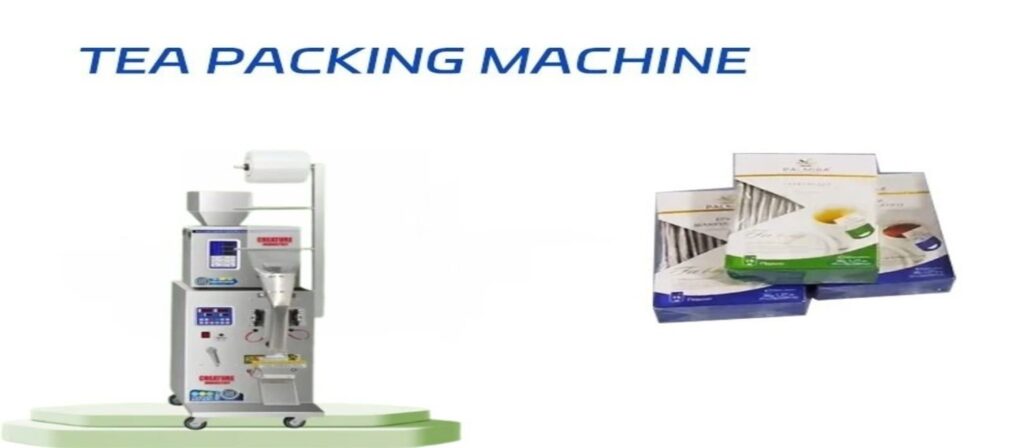Introduction to Tea Packing Machines
In the modern tea industry, efficiency and precision are paramount. A tea packing machine is an essential tool for businesses looking to streamline their packaging process while maintaining product quality and consistency. These machines help reduce manual labor, minimize product wastage, and ensure that tea is packed hygienically and securely.
Types of Tea Packing Machines
There are various types of tea packaging machines available, each designed for different applications. Understanding their functionality can help businesses choose the best option for their needs.
1. Automatic Tea Packing Machine
These machines are fully automated and can perform functions such as weighing, filling, sealing, and cutting tea bags. They are ideal for large-scale tea production facilities.
2. Semi-Automatic Tea Packing Machine
A semi-automatic tea packing machine requires some manual intervention but still significantly enhances efficiency. It is suitable for small to medium-sized tea businesses.
3. Tea Bag Packing Machine
This machine specializes in packing tea bags, commonly found in commercial tea brands. It ensures uniformity in weight, size, and sealing of tea bags.
4. Loose Leaf Tea Packing Machine
Designed for bulk or loose-leaf tea packaging, this machine ensures that loose tea is packed in pouches, jars, or tins without any spillage or contamination.
5. Pyramid Tea Bag Packing Machine
A pyramid tea bag packing machine produces premium pyramid-shaped tea bags, enhancing the infusion process and improving tea quality.
Key Features of a Tea Packing Machine
To ensure optimal performance, tea packing machines come with a range of features:
- Automated Weighing System – Ensures precise weight measurements to maintain consistency.
- Sealing Technology – Uses heat-sealing, ultrasonic sealing, or glue-based sealing to ensure freshness.
- Adjustable Speed Settings – Allows customization of packing speed based on production demands.
- Touchscreen Control Panel – Provides an easy-to-use interface for machine operation.
- Material Compatibility – Supports different packaging materials, including paper, foil, and plastic.
- Hygienic Design – Made from stainless steel to prevent contamination and comply with food safety regulations.
Considerations for Selection
Choosing the right tea packing machine involves evaluating several factors:
- Production Volume: Align the machine’s capacity with your production requirements to ensure optimal utilization.
- Product Type: Different teas may require specific packaging solutions, especially when dealing with delicate or specialty teas.
- Customization Needs: Some machines offer customization options to cater to unique packaging designs or branding requirements.
- Technical Support and Maintenance: Ensure that the manufacturer provides reliable after-sales support and maintenance services to minimize downtime.
Conclusion
Investing in a suitable tea packing machine is a strategic decision that can significantly impact your production efficiency and product quality. By understanding the various types, features, and benefits, you can make an informed choice that aligns with your business objectives and market demands.
Frequently Asked Questions (FAQs) About Tea Packing Machines
1. What is a tea packing machine?
A tea packing machine is an automated device designed to package tea into various types of bags or containers. It ensures efficiency, accuracy, and consistency in packaging, reducing human labor and maintaining product quality.
2. What types of tea packing machines are available?
There are several types of tea packing machines, including:
- Filter Tea Bag Packing Machines (with or without strings, tags, and outer envelopes)
- Pyramid Tea Bag Packing Machines
- Bulk Tea Packing Machines (for loose leaf tea)
- Vacuum Packing Machines (for long-term storage and preservation)
3. How do tea packing machines work?
Tea packing machines work by:
- Measuring and filling the tea into bags or containers.
- Sealing the bags using heat or ultrasonic methods.
- Adding additional features such as tags, strings, or outer envelopes.
- Cutting and dispensing the packaged tea for distribution.
4. What materials are used for tea packaging?
Common packaging materials include:
- Filter paper (for traditional tea bags)
- Nylon or PLA mesh (for pyramid tea bags)
- Foil-lined paper (for enhanced freshness)
- Plastic or aluminum pouches (for bulk packaging)
5. Can tea packing machines handle different tea types?
Yes, most tea packing machines can handle different types of tea, including black tea, green tea, herbal tea, and specialty blends. Some machines allow customization for various leaf sizes and blends.
6. What is the production speed of a tea packing machine?
Production speeds vary depending on the machine model. Basic machines may produce 30–50 bags per minute, while high-speed industrial models can reach 100–120 bags per minute.
7. What are the benefits of using a tea packing machine?
- Increased efficiency – Faster packaging process.
- Better hygiene – Reduced human contact.
- Consistent quality – Uniform weight and sealing.
- Cost-effectiveness – Reduces labor costs in the long run.
8. How do I maintain a tea packing machine?
Regular maintenance includes:
- Cleaning after each production cycle.
- Lubricating moving parts to prevent wear and tear.
- Checking and replacing sealing components if needed.
- Ensuring correct calibration for accurate filling.
9. Can a tea packing machine be customized?
Yes, many manufacturers offer customization options such as:
- Adjustable bag sizes
- Different sealing techniques
- Branding elements like logos on tags
- Multi-flavor blending capabilities






